English Bulldog Overview Care Tips for Healthy and Happy Pets
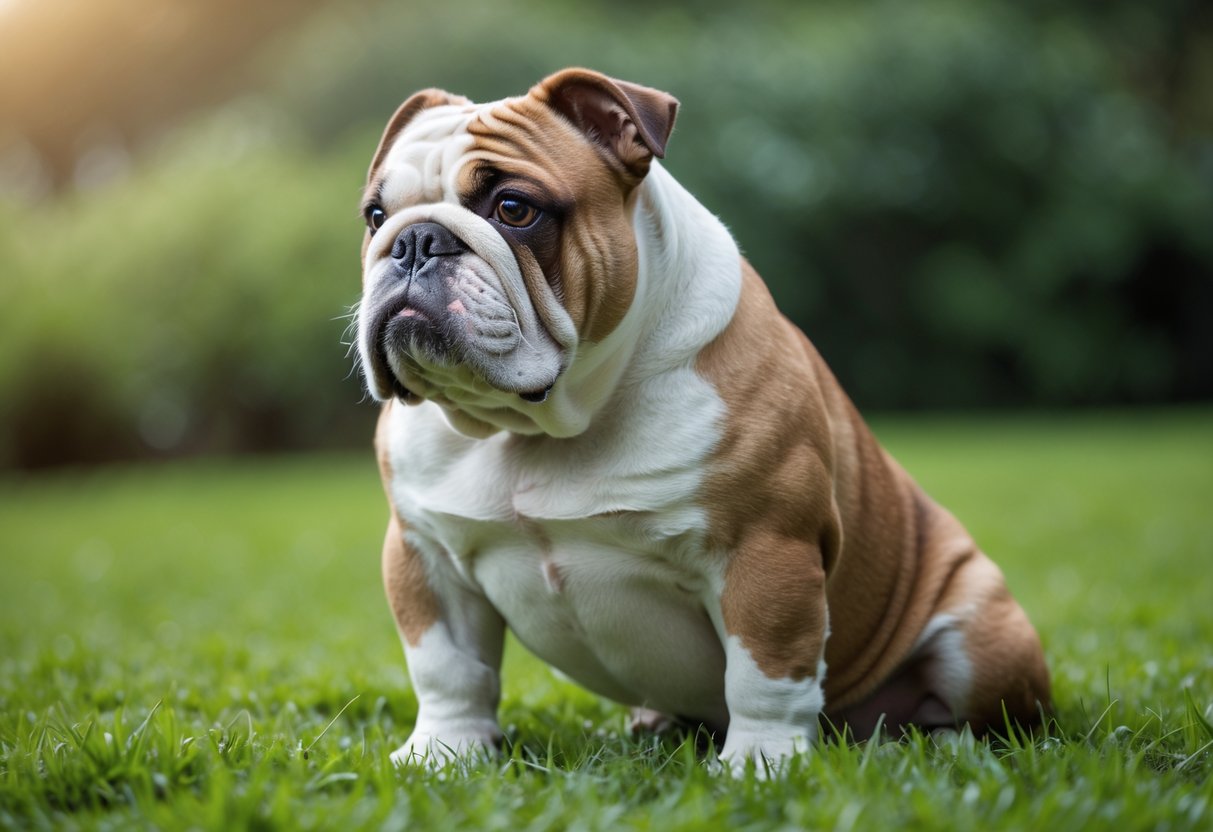
The English Bulldog is a distinctive dog breed known for its stocky build, wrinkled face, and gentle nature. It has a long history dating back to England, where it was originally bred for bull-baiting. Today, it is loved as a calm, loyal companion.
This breed is valued for its sweet, calm personality combined with a strong, muscular body that makes it unique among dog breeds. Despite its tough appearance, it is friendly and often good with families. Understanding its traits helps owners care for it properly.
English Bulldogs require special care due to their physical traits and health needs. Their unique appearance, including a broad head and short nose, affects how they exercise and live comfortably. Learning about their history and temperament makes it easier to appreciate and care for this breed.
English Bulldog Breed Overview
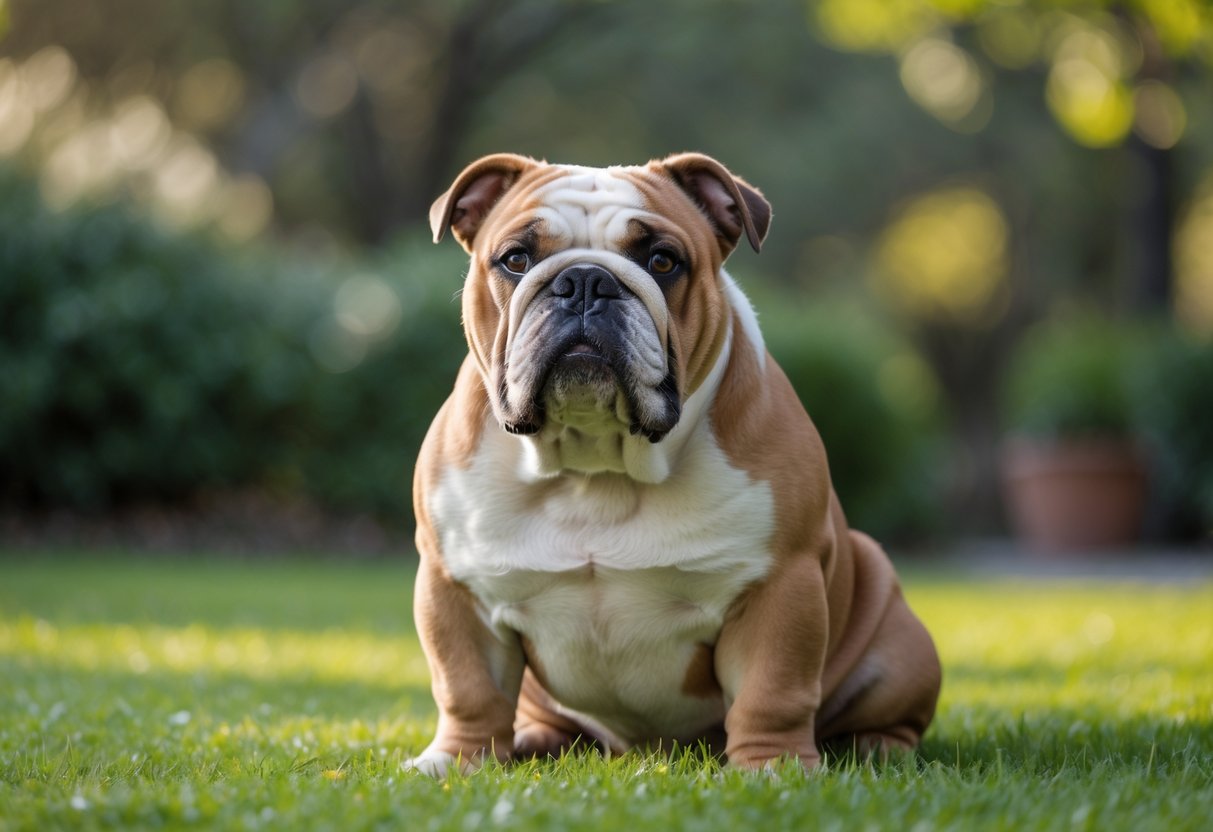
The English Bulldog is a unique breed known for its strong build, loose skin, and distinct face shape. It has a long history and clear breed standards that define its size, weight, and appearance. This breed requires specific care because of its physical traits.
Origin and History
The English Bulldog originated in England. It was first bred for bull-baiting, a sport where dogs fought bulls. This made the breed strong, tough, and tenacious. Bull-baiting was banned in the 19th century, so the breed’s purpose shifted from fighting to companionship.
Over time, breeders worked to reduce aggression, making the English Bulldog calmer and friendlier. Today, it is popular as a family pet and is often seen as a symbol of determination and loyalty. The breed became recognized by official dog clubs in the late 1800s.
Physical Characteristics
This breed has a muscular, medium-sized body with broad shoulders. It stands about 14 to 16 inches tall. Males usually weigh between 50 and 54 pounds, while females are slightly lighter at around 50 pounds.
The English Bulldog’s skin is loose, with many heavy wrinkles and folds on the face. It has a short, smooth coat that shines. The nose is short and flat, often described as “squashed,” and the breed has a noticeable underbite.
Colors vary widely and include brindle, fawn, white, red, brown, and even rare colors like blue and merle. Bulldogs can be solid-colored, or have two or three colors in their fur.
Breed Standards
Breed standards set by kennel clubs focus on the dog’s height, weight, and body shape. The English Bulldog should be low to the ground with a broad, deep chest. The breed’s head must be large compared to the body, with thick skin folds and a pronounced dewlap under the throat.
The short muzzle is a key feature, and the eyes are wide set and dark. Ears are small and set high. The coat is always short and fine, with no curls. Breeders also look for a calm temperament as part of the official standards.
| Feature | Description |
|---|---|
| Height | 14-16 inches |
| Weight | 40-54 pounds |
| Coat | Short, smooth, shiny |
| Colors | Brindle, fawn, white, red, etc |
| Head | Large, with heavy wrinkles |
| Muzzle | Short and flat |
| Temperament | Calm and friendly |
Temperament and Personality
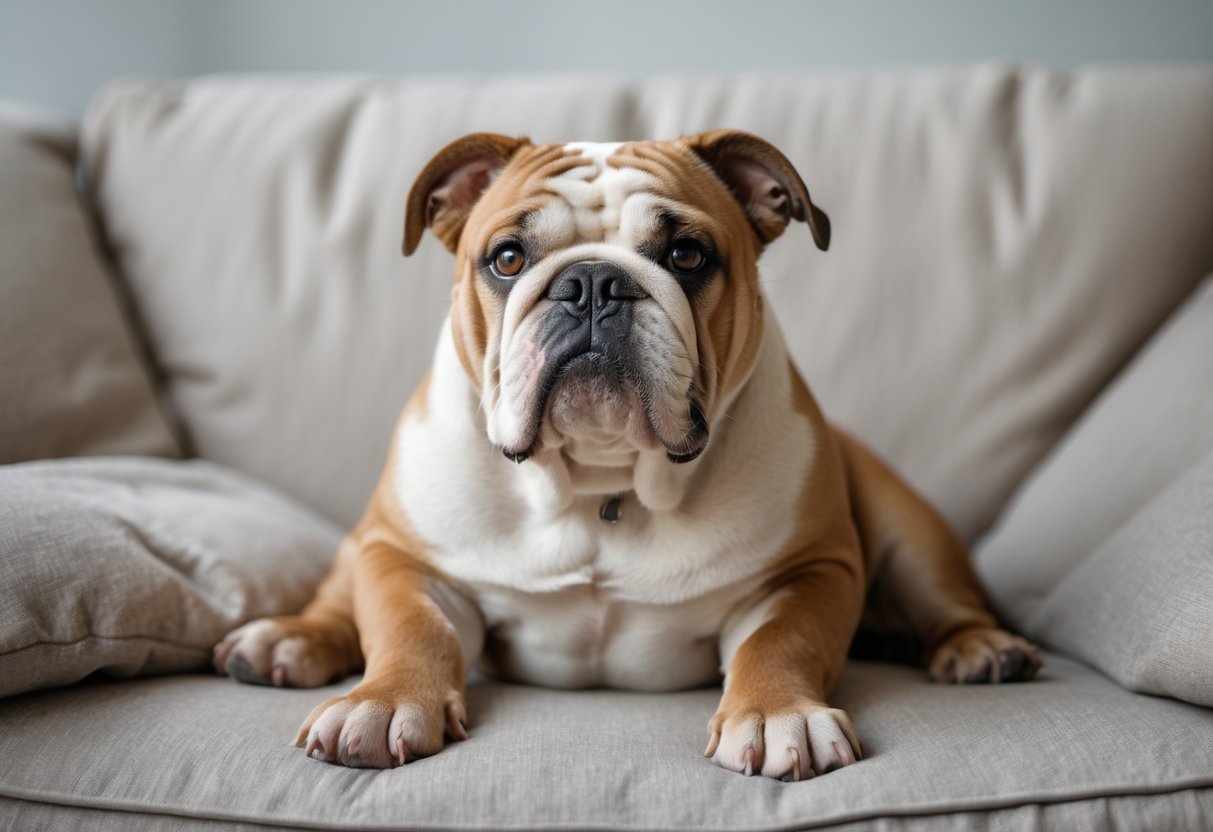
The English Bulldog is known for being loyal and friendly, but also can be stubborn. It has a calm nature and tends to form strong bonds with family members. Its social skills and behavior vary depending on early training and socialization.
General Disposition
English Bulldogs are mostly calm and laid-back dogs. They are not very energetic but enjoy short play sessions. Despite their wrinkled, sometimes grumpy-looking face, they are affectionate and enjoy spending time with their owners.
They can be stubborn, which may make training difficult. Positive reinforcement and patience are key when teaching commands. Bulldogs also show a strong protective instinct toward their family members without being aggressive.
They usually do well in quiet environments and may not handle high-stress situations well. Bulldogs prefer predictable routines and can be sensitive to harsh treatment or loud noises.
Interaction with Children
English Bulldogs are generally good with children. Their patient and tolerant nature helps them remain calm around young kids. They tend to be gentle and sturdy enough to handle rough, playful behavior without losing their temper.
Because of their protective instinct, Bulldogs often watch over children in the household. However, supervision is important, especially with very young children, to prevent accidental rough handling of the dog or the child.
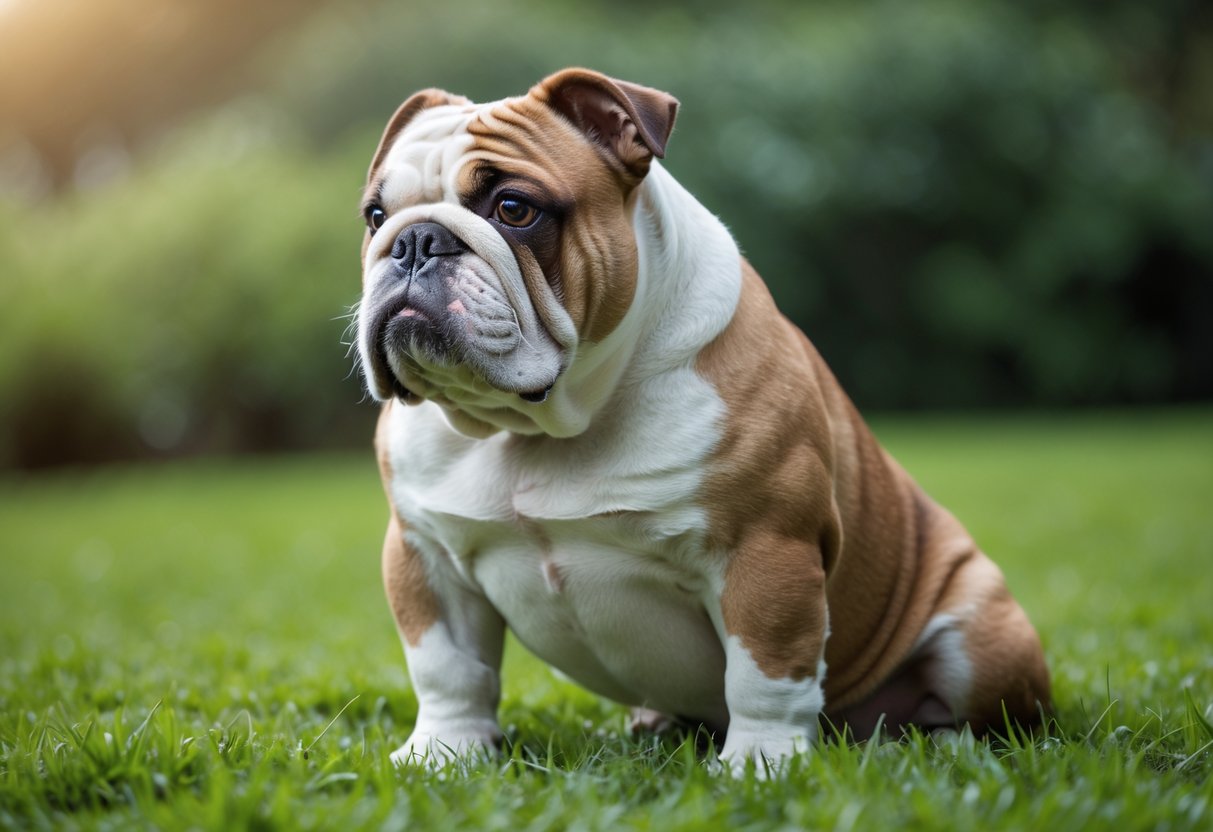
Teaching children how to properly interact with the dog helps maintain a positive relationship. Bulldogs don’t usually like sudden movements or loud noises, so kids should learn to approach calmly.
Compatibility with Other Pets
Bulldogs can get along with other pets, especially if they grow up together. Their friendly but sometimes stubborn nature means they may need gradual introductions to new animals.
They tend to be sociable with many household pets but can be territorial if not properly socialized. Early exposure to other dogs and animals reduces chances of aggression.
Because they are low energy, Bulldogs usually do not bother smaller pets but might become protective of their space or food. Monitoring interactions at first helps avoid conflicts.
Health and Common Issues
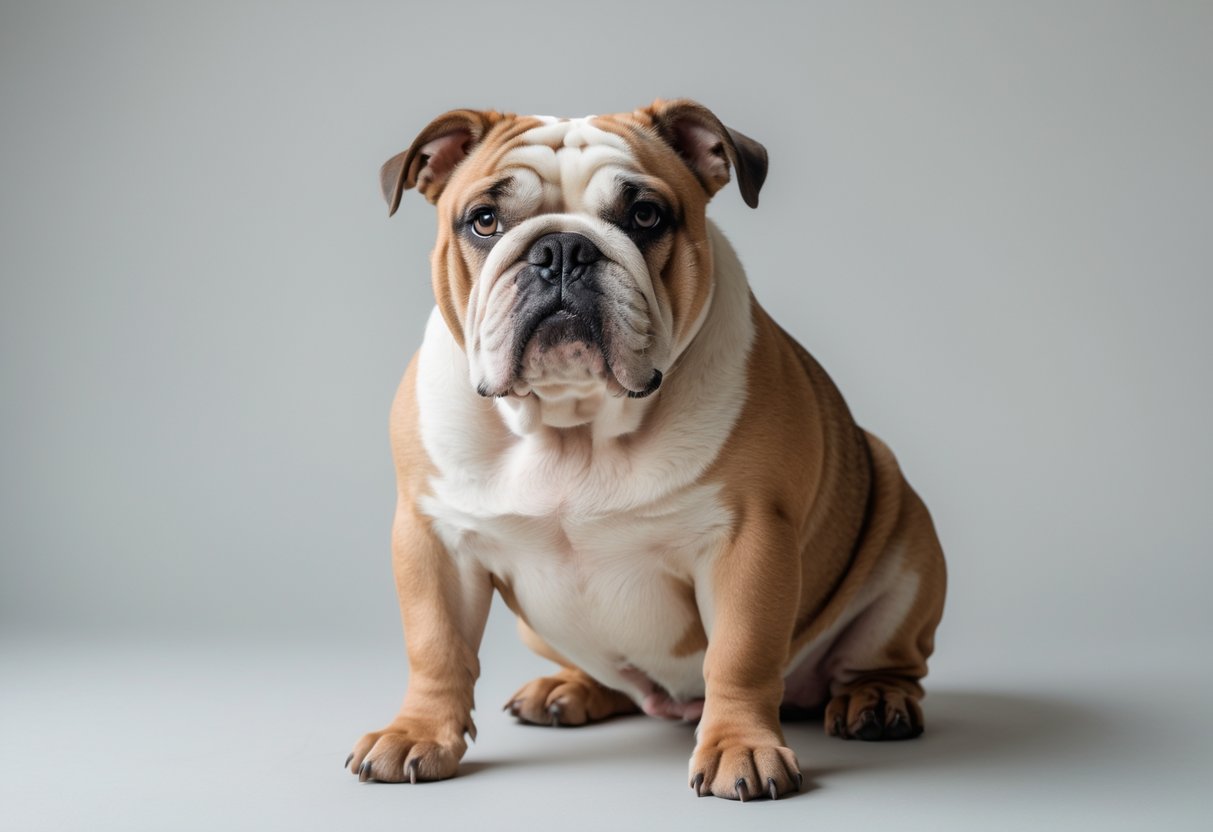
English Bulldogs face several health challenges linked to their unique body shape and genetics. Many problems affect their breathing, skin, and eyes, while some conditions come from inherited traits. Early detection and proper care are important to manage these issues.
Genetic Conditions
English Bulldogs often inherit problems like hip dysplasia and heart defects. Hip dysplasia weakens joints and causes pain or difficulty walking. They can also develop cherry eye, where a gland inside the eye swells and becomes visible.
The breed is prone to certain eye disorders, such as entropion, which causes eyelashes to irritate the eye surface. Some Bulldogs have a narrow birth canal, making breeding and birth more complicated. These genetic issues may require surgery or lifelong treatment.
Allergies and Skin Problems
Bulldogs frequently suffer from allergies, which often lead to itchy skin and redness. Common allergens include pollen, dust, and certain foods. Their skin folds are prone to infections because moisture and dirt can get trapped easily.
Owners should regularly clean the skin folds to prevent bacterial and fungal infections. Hot spots, or localized skin inflammations, are common and may need veterinary attention. Proper grooming and diet adjustments help reduce flare-ups.
Respiratory Concerns
English Bulldogs have flat faces, causing breathing difficulties known as Brachycephalic Obstructive Airway Syndrome (BOAS). This condition narrows airways, making it hard to breathe, especially in hot or humid weather.
Affected dogs may snore loudly, gasp for air, or tire quickly during exercise. Surgery can improve breathing in some cases, but managing activity levels and weight is crucial to ease strain on the lungs.
Signs of Illness
Bulldogs can hide symptoms, so owners must know warning signs. Watch for heavy breathing, coughing, or excessive snoring. Changes in appetite, energy, or behavior may signal health problems.
Eye redness, discharge, or swelling require prompt care, as these may indicate infection or injury. Skin sores that do not heal or constant scratching also need attention. Early veterinary visits improve outcomes and quality of life.
Care and Grooming
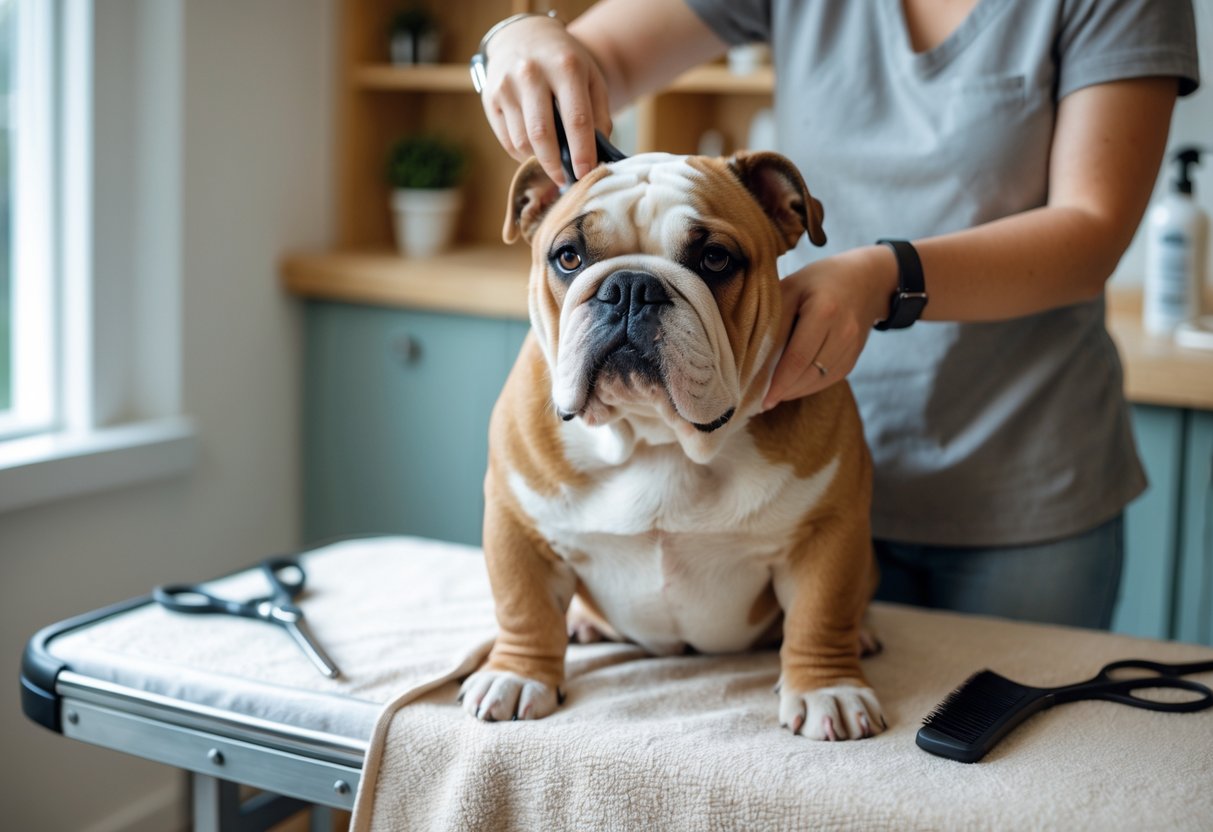
English Bulldogs need careful attention to their diet, exercise, and daily grooming to stay healthy. Proper feeding supports their unique body type. Their exercise must be gentle to avoid strain. Grooming includes cleaning skin folds and keeping their coat healthy.
Diet and Nutrition
English Bulldogs should eat high-protein food with slowly digestible carbs like sweet potatoes or barley. Adults usually need about ¾ to 1 cup of food twice a day. Puppies should be fed smaller, more frequent meals, about a third of a cup three times daily.
Their diet must help maintain a healthy weight to avoid stress on joints and breathing problems. Avoid giving too many treats or human food, as they gain weight easily. Fresh water should be available at all times.
Exercise Needs
Bulldogs have lower energy levels, so exercise should be short and moderate to prevent overheating or overexertion. Daily walks of about 15-20 minutes are enough.
Avoid intense or long workouts, especially in hot weather. Bulldogs can struggle with breathing when tired. Playtime indoors or in shaded areas is suitable for keeping them active and happy without risk.
Daily Grooming Routine
Brushing the Bulldog’s coat with a soft brush several times a week helps remove loose hair and keep skin healthy. Special attention should be given to their skin folds and tail pocket, which can trap dirt and moisture.
Eyes need checking for issues like redness or “cherry eye.” Ears should be cleaned regularly. Baths can be given as needed but not too often to avoid drying out their skin. Dental care with regular brushing is important to prevent gum disease.
Training and Socialization
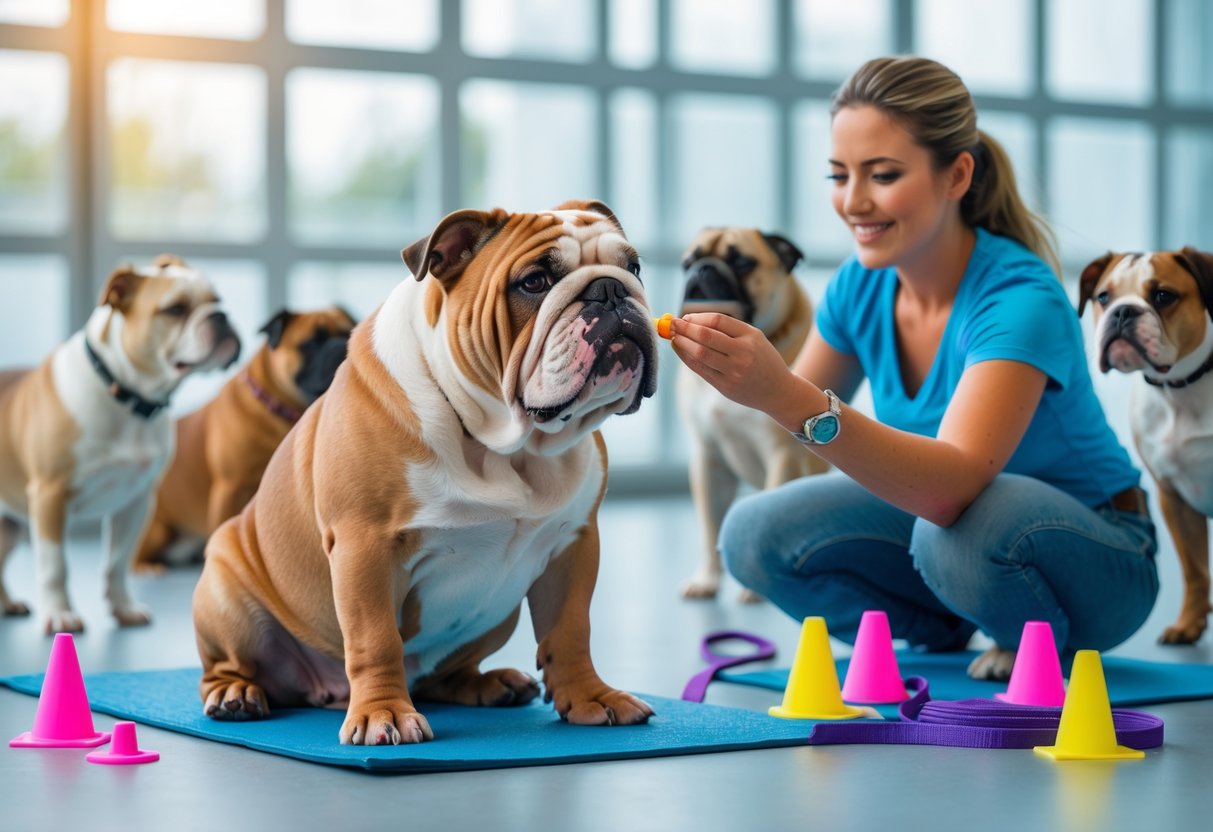
English Bulldogs need consistent routines and clear rules to learn well. Early social interaction and proper behavior habits will help them become well-mannered and comfortable around people and other animals.
Housebreaking Tips
Housebreaking an English Bulldog requires patience and regularity. Establish a set schedule for bathroom breaks, especially after waking up, eating, or playing.
Use positive reinforcement like treats or praise immediately after the puppy eliminates outside. Avoid punishment, as Bulldogs respond better to gentle guidance.
Be prepared for accidents and clean them thoroughly to remove any scent markers. Crate training can help by encouraging the dog to hold its bladder since they dislike soiling their sleeping area.
Keep bathroom sessions short and consistent. Patience and repetition during the first few months are key to effective housebreaking.
Obedience Training
Obedience training is essential for English Bulldogs due to their stubborn nature. Start with basic commands like sit, stay, and come. Use clear, simple commands paired with positive rewards such as treats or affection.
Training sessions should be short but frequent, about 5 to 10 minutes each, to maintain the dog’s attention without causing frustration.
Consistency in rules and expectations helps prevent confusion. Avoid harsh corrections; Bulldogs respond better to gentle, patient teaching methods.
Early socialization during puppyhood also aids obedience by easing anxiety and increasing confidence. Exposure to different people, sounds, and environments improves focus during training.
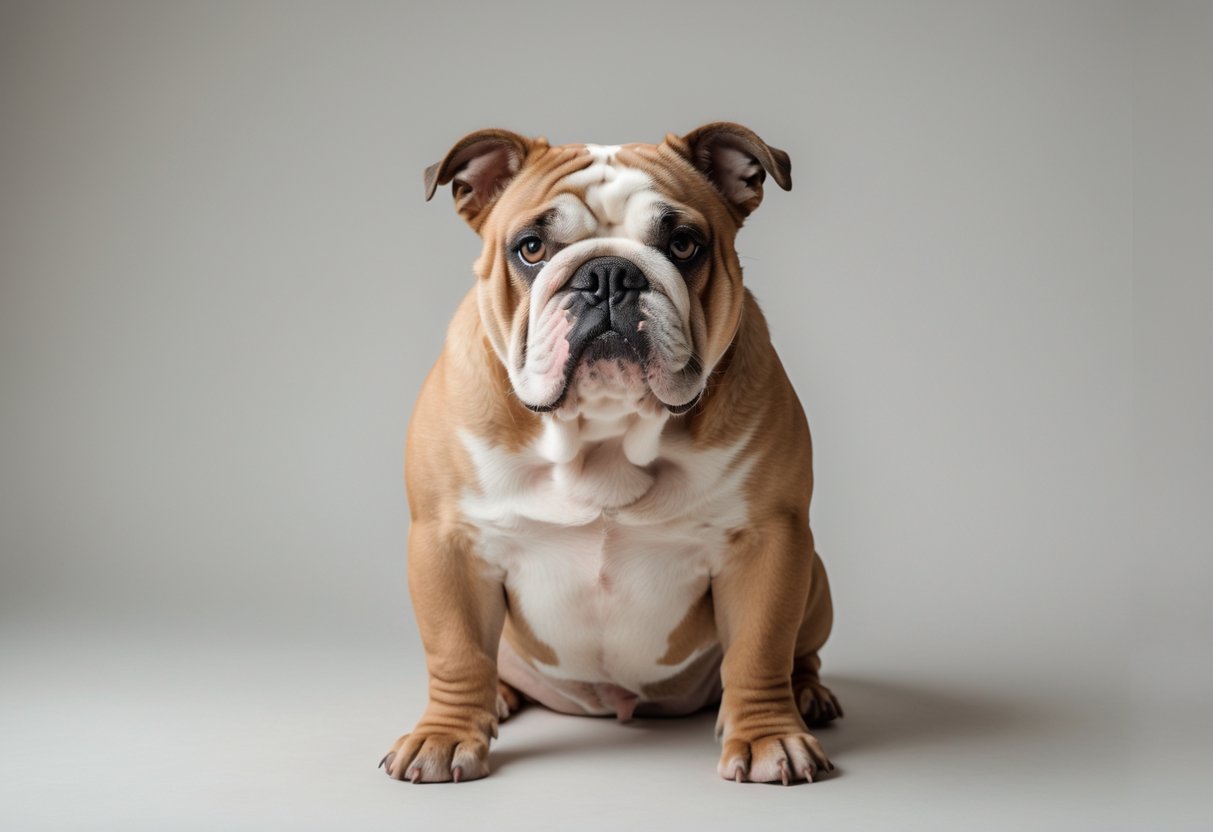
Frequently Asked Questions
English Bulldogs have specific costs, health concerns, and exercise needs. Their diet requires care to avoid weight problems. They look similar to French Bulldogs but have clear differences in size and shape.
